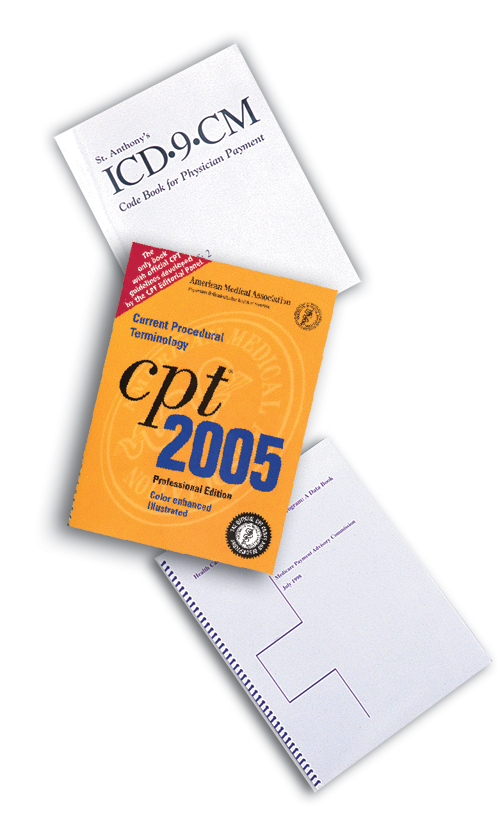
Q. We struggle with diagnosis codes. Are diagnosis code errors common?
A. Yes. For many physicians and staff, coding is all about picking the right CPT code(s). Conversely, diagnosis codes (ICD-9) receive a lot less attention. Reasons for errors and misunderstandings are many, including incompleteness, inaccuracy, and sometimes, intentional abuse.
The system of diagnosis codes, the International Classification of Diseases–9th revision–Clinical Modification, ICD-9-CM, comprises three volumes: Volume 1, the Tabular List, Volume 2, the Alphabetic List, and Volume 3, procedure codes to identify facility services for hospitals. Most practices only use Volumes 1 and 2. ICD-9 codes are updated semi-annually and manuals are published annually.
To find the appropriate ICD-9 code in the manual, first look in the alphabetical listing (i.e., glaucoma) and second, in the tabular listing (i.e., 365.xx). The tabular listing provides more detailed explanations and guidance. It further stratifies glaucoma disease to various levels of specificity providing up to five digits (e.g., 365.11–Primary open angle glaucoma). The first three digits describe the location and category of disease; the fourth and fifth digits elaborate on the description. Use of specific diagnoses improves the quality of claims, may support higher levels of service, and reduces claim denials.
Q. How do I select the diagnosis code(s) when reviewing my
assessment(s)?
A. The diagnosis code should correlate with the reason for the patient's visit as described in the chief complaint. For example, if the patient's chief complaint is three-month follow-up of chronic open angle glaucoma in both eyes, the primary diagnosis code should be 365.11 (COAG). If this patient's history also includes cataracts and AMD, these added diagnoses are subordinated or omitted entirely. Without a complaint to correlate with cataracts and AMD, these conditions may not be particularly relevant to today's encounter. The ICD-9 guidelines instruct users to list chronic conditions or secondary diagnoses only if pertinent to the visit.
Q. What if the patient presents with a complaint or a symptom, but no conclusive diagnosis is made?
A. It is common to see an assessment that reads, "probable, suspect, rule out, or undefined disorder." Claim submission requires a diagnosis code, however, no such codes exist to describe a probable condition or rule out status.
The introduction to the ICD-9 manual addresses this issue by stating, "Diagnoses documented as 'probable,' 'suspected,' 'questionable,' or 'rule out,' should not be coded as if the diagnosis is confirmed … code to the highest degree of certainty, such as describing symptoms, signs, abnormal test results, or other reasons for the encounter." It also states, "… Codes that describe symptoms as opposed to diagnoses are acceptable if this is the highest level of certainty documented by the physician." Code the symptoms if you cannot make a definitive diagnosis.
Q. How does my staff know which diagnosis code correlates with which service?
A. Your staffer at the check-out desk may not necessarily know which diagnosis is associated with which procedure; you should match them up. The easiest way to do so is to draw a line between the CPT code and the ICD-9 code to make the association.
Some patients—for example, some with diabetes, or those taking high-risk medications such as Plaquenil—present with no ocular signs of their systemic disease, but an eye exam is medically necessary. These claims use the systemic disease as the primary diagnosis.
Q. How do I code for diabetic patients when ocular disease is present?
A. The ICD-9 CM Official Guidelines for Coding and Reporting, updated in April 2005, contain instructions on sequencing diagnosis codes for diabetics with associated conditions. It states, "When assigning codes for diabetes and its associated conditions, the code(s) from category 250 must be sequenced before the codes for the associated conditions." An example of a diabetic patient with a diabetic cataract would read:
250.50 Diabetes with ocular manifestations.
366.41 Diabetic cataract.
Q. How do I code for diseases that no longer exist?
A. Patients return for follow-up exams so a physician may assess their progress for treated conditions. During the course of treatment, diagnosis coding is straightforward. When the condition no longer exists, the ICD-9 introduction states, "… Do not include codes for conditions that were previously treated and no longer exist."
For example, a malignant lesion is removed from the patient's eyelid. All margins are clear, and the patient is informed that no further malignancy exists at this time. The patient returns six months post-excision with no problems or complaints for a follow-up check. The area remains clear with no signs of re-growth. It is inappropriate to code today's visit with a malignant lesion diagnosis. The correct ICD-9 is V10.83 – Personal history of malignant neoplasm, skin.
Q. Is insurance coverage of services affected by the diagnosis code?
A. Yes. Coverage policy of third-party payers is driven by the purpose of the procedure and described on the claim for reimbursement as the diagnosis code. Limitations of coverage and reimbursement exist because some ICD-9 codes are excluded from the policy. For example, Medicare doesn't pay for routine vision care exams (V72.0) or to cope with refractive errors (367.xx). If a Medicare beneficiary's chief complaint is "wants new eyeglasses," this exam will not be covered.
Q. Can I change a diagnosis if the beneficiary wants to ensure coverage?
A. No. Beneficiaries may become agitated and confrontational when told that their health plan doesn't pay for some services. It may be tempting to change the diagnosis on the claim form to prevent a denial, but don't. Knowingly filing a deceptive claim for reimbursement is fraud.
Ms. McCune is vice president of the Corcoran Consulting Group. Contact her at DMcCune@ corcoranccg.com.



